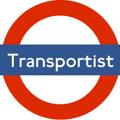Transportist reviewed Traffic by Tom Vanderbilt
Review of 'Traffic' on 'LibraryThing'
5 stars
Traffic by Tom Vanderbilt is a new book (out in July 2008) that provides an exceptionally well-written and comprehensive survey of the more interesting questions in driver psychology, traffic engineering, human behavior and to a lesser extent transportation planning. Following in a line of non-fiction books like those by Malcolm Gladwell and Steven Johnson, it takes an idea and develops it thoroughly (with 96 pages of footnotes and references). It posits road travel as a microcosm of human relations that not only can be informed by an understanding of experimental and behavioral economics, but whose findings can be exported to help us understand the workings of society.returnreturnThe key questions Vanderbilt examines range from when to merge at a highway lane drop, why the other lane seems faster, drivers increasing (and unwarranted) self-esteem, misperception of risks and traffic safety, why slower can sometimes be faster and the ideas behind shared space, …
Traffic by Tom Vanderbilt is a new book (out in July 2008) that provides an exceptionally well-written and comprehensive survey of the more interesting questions in driver psychology, traffic engineering, human behavior and to a lesser extent transportation planning. Following in a line of non-fiction books like those by Malcolm Gladwell and Steven Johnson, it takes an idea and develops it thoroughly (with 96 pages of footnotes and references). It posits road travel as a microcosm of human relations that not only can be informed by an understanding of experimental and behavioral economics, but whose findings can be exported to help us understand the workings of society.returnreturnThe key questions Vanderbilt examines range from when to merge at a highway lane drop, why the other lane seems faster, drivers increasing (and unwarranted) self-esteem, misperception of risks and traffic safety, why slower can sometimes be faster and the ideas behind shared space, changing travel behavior patterns and increased female labor force participation, to questions of induced demand and travel time budgets.returnreturnWhen exploring these topics, Vanderbilt discusses key evidence and findings, citing the work of relevant scholars or practitioners, so this is true reporting and synthesis, rather than advocacy or agenda-pushing that one fears with more popular books, especially popular books in transportation and planning where everyone is an expert).returnreturnWhen interpreting the literature in a finite amount of space and time, there will always be omissions or simplifications or misinterpretations. As such I have a few nits to pick.returnreturnp. 121 "The ideal highway will move the most cars, most efficiently at a speed just about halfway between 80 and 20 mph." The book is referring obliquely to the Greenshields model of the Fundamental Diagram of Traffic. Most of the recent evidence suggests that maximum flow can be achieved at about freeflow speed, i.e. the fundamental diagram is a truncated triangle rather than a parabola for a single road segment. The issue is more complicated for a network which has spillovers from downstream links, where the combination of segments produces a more parabolic shape.returnreturnp. 158 The explanation of Braess's Paradox could really have been aided by a graphic (and an equation, at least in the notes). I know this is for a general audience, but the book totally lacks in what would be very helpful illustrations of some of the key concepts. It would also have been aided by an introduction of Wardrop's Equilibrium and System Optimal principles. One suspects it was cut, as there is an allusion to the topic, and Wardrop is mentioned in the notes. On the same page, Roughgarden is mentioned, but not his poetic "Price of Anarchy", which is also really interesting in this context (the loss to letting drivers navigate themselves is much less than one might think). This would also have tied really well into the subsequent discussion of road pricing, which aims to internalize the congestion externality so that system optimal and user equilibrium costs are the same.returnreturnFinally, I need to get his agent. The book was on the Amazon Top 20, and currently sits at 49. In a way it is a book that I wish I had written, with a much better title than "Freakoportation" which I had (facetiously) suggested to Kara Kockelman of the University of Texas.returnreturnNevertheless, I eagerly await Traffic 2, or whatever Vanderbilt's next project turns out to be. There is so much more in the field of transportation to cover, and really it is much more difficult and interesting than rocket science.

